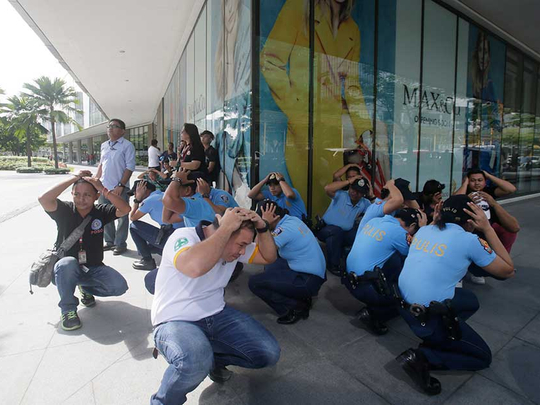
Manila: Some five million Metro Manila residents are expected to take part in a massive drill to be held on Thursday morning held to simulate events that could take place if a magnitude 7 earthquake struck the capital region.
Government, as well as nongovernment organisations such as the Red Cross Society of the Philippines had spent nearly a month preparing for the drill.
“This is the first time that we would be holding an earthquake drill of such a scale,” Metro Manila Development Authority (MMDA) chair Francis Tolentino said while pointing out that the drill will be held at exactly 10.30am.
Seismologists fear the possible occurrence of a magnitude 7+ earthquake in Metro Manila as the 100 kilometre long West Valley Fault Line, which has not moved significantly for more than a century, is considered ripe for movement.
Should such movement in the earth’s crust occur, experts said it could result in massive damage and could trigger a serious humanitarian emergency. An estimated 30,000 could lose their lives as structures collapse and some areas would be engulfed in massive fires.
To cushion the impact of such a disaster, experts and officials had set a massive earthquake drill on July 30 at 10.30am to determine reaction of the populace and give disaster risk management officials a first hand experience on coping with such a disaster.
All private and state schools, government offices, military, police and civilian agencies are expected to take part in the drill which will be characterised by emergency measures, Tolentino said.
He said weeks before the drill, key personnel were provided with training on what to do during an earthquake.
Two weeks ago, the MMDA launched its Earthquake Preparedness Website, which contains among other things, important information on how to survive a strong temblor.
As part of the preparations, Executive Secretary Paquito Ochoa junior issued a memorandum enjoining heads of government departments and local government units to exempt their respective officials and employees who will participate in the drill from observing regular office hours.
“The private sector, including volunteer and civic organisations, is hereby encouraged to participate and assist in the implementation of the memorandum s the exigencies and circumstances may require,” he said.
The last time Metro Manila experienced a powerful earthquake was in July 1990.
While the capital region experienced a strong temblor, which caused residents to flee to the safety of the open, the quake was most felt in Central and Northern Luzon, where it killed 1,621 people.
Disaster management officials said, in the event that such a powerful temblor would strike Metro Manila, it could isolate certain areas of the metropolis as bridges collapse.
The Red Cross said it has designated key evacuation areas in four points in Metro Manila as evacuation centres.











